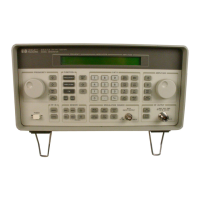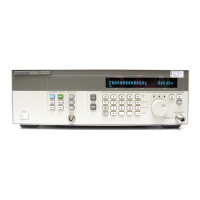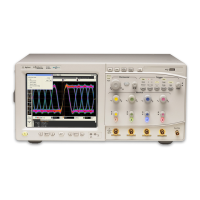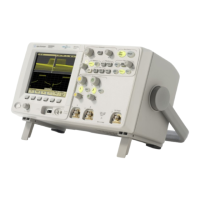5a-14
Theory of Operation
A10 Frequency Extension (8648B/C/D)
A10 Frequency Extension (8648B/C/D)
The main input to the A10 frequency extension module is the 9 kHz to 1000 MHz RF from
the A6 output module. It operates in three frequency bands to cover the extended
frequency range of the 8648B/C/D:
• 9 kHz to 1000 MHz
• > 1000 MHz to 2000 MHz
• > 2000 to 4000 MHz
For frequencies ≤ 1000 MHz, the module operates as an amplifier and provides a dc voltage
to the A6 output module that is used for ALC. This dc voltage represents the detected RF
output level from the module and is used as an input to the ALC integrator on the A6
module. For RF output frequencies between 1000 and 2000 MHz, a doubler is used on the
500 to 1000 MHz input signal. Three bandpass filters are used over this frequency range to
control harmonics. A pre-level detector provides a dc voltage to the A6 output module that
is used to drive the ALC loop integrator on the A6 output module. An additional ALC loop
is provided on this module for frequencies > 1000 MHz.
For RF output frequencies between 2000 and 4000 MHz an additional doubler is used. For
this frequency range, the signal from the A6 output module is between 500 and 1000 MHz.
ALC operation is the same as for the 1000 to 2000 MHz band.
The A10 assembly contains a calibration EEROM that contains calibration data. This data
must be regenerated anytime the A10 assembly is replaced.

